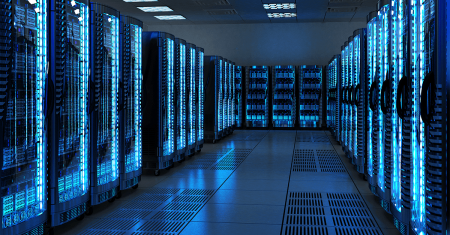Liquid Immersion Cooling Solution For Data Center
Kontaktieren Sie uns noch heute für die perfekte Lösung zur Temperaturkontrolle
As the power of single cabinets in data centers becomes larger and larger, the use of traditional air cooling technology for heat dissipation can no longer meet the fast and efficient cooling requirements of data centers. Under the guidance of the “dual carbon” strategic goal, it has become an inevitable choice to develop low-carbon and efficient cooling technology to solve the technical problems of current data center heat dissipation difficulties and realize the green and low-carbon development of data centers.
Research shows that liquid cooling technology has become an effective solution to solve the cooling problem of data centers. Liquid cooling methods are mainly divided into three types: cold plate liquid cooling, immersion liquid cooling and spray liquid cooling. Compared with traditional air cooling technology, liquid cooling technology has the advantages of efficient cooling, energy saving and consumption reduction, quietness and low noise, system stability, and space saving.

Cold plate liquid cooling is a liquid cooling method in which the heat of the heating device is indirectly transferred to the coolant enclosed in the circulation pipeline through a cold plate (usually made of copper or aluminum), and the heat is taken away by the coolant. Since the coolant is not in direct contact with the electronic equipment, the coolant can be directly made of non-dielectric liquids with high specific heat capacity such as water or ethylene glycol aqueous solution, which has the advantage of strong heat-carrying capacity and can remove more heat from the electronic equipment.
Immersion liquid cooling uses coolant as the heat transfer medium, completely immersing the heating device in the coolant, and performing heat exchange through direct contact. Depending on whether the coolant undergoes phase change, immersion liquid cooling is divided into single-phase immersion liquid cooling and dual-phase immersion liquid cooling.
Compared with dual-phase liquid cooling, single-phase thermal fluid does not undergo phase change, nor does it evaporate in the air like dual-phase thermal fluid, and the cost is an order of magnitude lower. Because single-phase thermal fluid does not evaporate in the air, the cooling system does not have to be sealed to ensure evaporated fluid is recaptured, which also makes it easier to uninstall or replace server components, improving system serviceability. At the same time, single-phase liquid cooling has low requirements on the external environment and can be started from small-scale deployments such as some servers in the data center or edge data centers. It can increase the rack availability rate and make the server operation safer and more stable. Its outstanding energy efficiency can also help reduce the size of data center infrastructure and even eliminate the need for other infrastructure, thereby significantly reducing energy consumption requirements, so it is gradually recognized by the industry.
E-Mail: info@lneya.com WeChat ID: +8615251628237 WhatsApp: +86 17851209193
 Präzisionskältemaschinen / Kleinkältemaschinen
Präzisionskältemaschinen / Kleinkältemaschinen
Die Kältemaschine kann in verschiedenen Industrien und Labors eingesetzt werden und unterstützt kundenspezifische Designs.
| Temperaturbereich | -18°C ~ +30°C | +5°C ~ +35°C Reihe |
| Kühlleistung | 0,35 ~ 0,9kW | 1,8 ~ 50kW |

Rückkühler
Unser Rückkühler arbeitet mit Niedertemperatur-Kältetechnik, die Temperatur beträgt bis zu -120℃, und verschiedene Zubehörteile sind anpassbar.
| Temperaturbereich | Serie -25°C ~ +30°C | -45°C ~ +30°C Reihe | Serie -60°C ~ -20°C | Serie -80°C ~ -20°C | Serie -120°C ~ -70°C |
| Kühlleistung | 0,8 ~ 30kW | 0,75 ~ 12kW | 0,4 ~ 6kW | 0,2 ~ 6kW | 0,3 ~ 5kW |

Niedertemperatur-Kühlgeräte
Wir haben uns auf die Herstellung von Niedertemperaturkältemaschinen mit einem Temperaturregelbereich von bis zu -150°C spezialisiert, die den Kühlbedarf verschiedener Branchen decken.
| Temperaturbereich | Serie -25°C ~ -5°C | Serie -45°C ~ -10°C | Serie -60°C ~ -10°C | Serie -80°C ~ -30°C | Serie -110°C ~ -50°C | Serie -150°C ~ -110°C |
| Kühlleistung | 12 ~ 360kW | 6 ~ 180kW | 6 ~ 180kW | 4 ~ 180kW | 2 ~ 120kW | 2,5 ~ 11kW |
Temperatursimulation für die Qualitätsprüfung von Fahrzeugen: Prüfung der Batterielebensdauer, Prüfstand für Einspritzdüsen/Motoren, Airbag-Prüfung, Komponentenprüfstand, usw.

Geeignet für die präzise Temperaturkontrolle von elektronischen Bauteilen. Bei der Herstellung von elektronischen Halbleiterkomponenten für raue Umgebungen umfassen die Phasen der IC-Gehäusemontage sowie der Entwicklungs- und Produktionstests auch elektronische Wärmetests und andere Simulationen von Umwelttests.

Flüssigkeitskühlung für Batterie-Energiespeichersysteme
| Typen | Für Converting Station | Für Energiespeicherbatterie | Für die Ladestation |
| Kühlleistung | 45kW | 5 ~ 8,5kW | 4kW |

Baureihe ZLFQ
Kühlmittelverteilereinheit
Flüssigkeitskühlgeräte eignen sich für die Prüfung von Halbleitern, die Prüfung elektronischer Geräte bei konstanter Temperatur, die Kühlung der Serverinfrastruktur und andere Orte, an denen die Temperatur von Flüssigkeiten kontrolliert wird.
| Temperaturbereich | +5°C ~ +35°C | +5°C ~ +35°C |
| Kühlleistung | 15 ~ 150kW | 200 ~ 500kW |

MD-Thermofutter-Serie
Es wird für die Prüfung von HF-Bauteilen und Leistungsbauteilen mit hoher Dichte (IGBTs und MOSFETs) verwendet und kann auch für die schnelle Kühlung von flachen Laborplatten (Plasma, biologische Produkte, Batterien) usw. eingesetzt werden.
| Temperaturbereich | -75°C ~ +225°C |
| Temperaturgenauigkeit | ±0.1℃ |

Schraubenkühler (Benutzerdefinierte Designs)
Niedertemperatur-Schraubenkühlmaschinen und Raumtemperatur-Schraubenkühlmaschinen
| Temperaturbereich | +5°C ~ +30°C | +5°C ~ +30°C | +5°C ~ +30°C | +5°C ~ +30°C | -25°C ~ +5°C | -25°C ~ +5°C |
| Kühlleistung | 107 ~ 1027kW (Einzelverdichter) | 299 ~ 2134kW (Doppelkompressor) | 98 ~ 934kW (Einzelverdichter) | 272 ~ 1940kW (Doppelkompressor) | 48 ~ 467kW (Einzelverdichter) | 51 ~ 497kW (Einzelverdichter) |
 LNEYA
LNEYA
 简体中文
简体中文



















































































